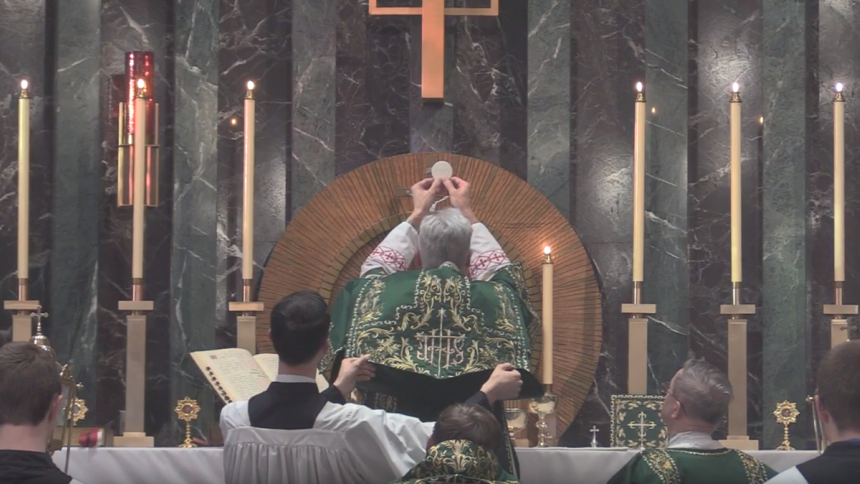
Bishop Earl Boyea of Lansing offered Pontifical High Mass at St. John Vianney Church in Flint to mark the 30th anniversary of the city’s Traditional Latin Mass Community, November 24.
“We were very excited and very grateful to have Bishop Boyea here, it’s a great honor,” said Michael Haggerty, Chairman of the Traditional Latin Mass Community of Flint.
“The visit of Bishop Boyea wasn’t actually our idea as it was Bishop himself who, very generously, reached out to Deacon Sean Costello of St. Matthew’s in Flint, the church where we are usually based, and asked if he could come visit the Traditional Latin Mass Community and offer Holy Mass for us – we were more than delighted and, of course, said ‘yes’ immediately.”
The term Traditional Latin Mass refers to the rite of Holy Mass as originated within the Diocese of Rome from the earliest days of the Church. This rite was revised during the papacy of Pope Saint Gregory the Great (540–604) which involved, according to one contemporary account, the Holy Father "removing many things, changing a few, adding some". Following the Council of Trent (1545–63), the rite was, again, slightly modified and also made obligatory across the Western Church.
This status quo persisted until 1969 when Pope Saint Paul VI promulgated a revised version of the Roman Rite – the Novus Ordo Missae or New Order of the Mass – which replaced the Traditional Latin Mass as the normative rite for Holy Mass across the Western Church.
In 2007, Pope Benedict XVI declared that both the Traditional Latin Mass and the New Order of the Mass should be considered as two forms of the Roman Rite, with the former being referred to as the “Extraordinary Form” and the latter as the “Ordinary Form.”
Bishop Boyea was assisted during Pontifical High Mass by the Reverend Louis Madey as Deacon and the Reverend Sean Costello as Sub-Deacon. The sacred music, provided by a parish schola, was directed Vladimir Vaculik. Michael Haggerty, a father-of-four himself, says that young families are particularly attracted to the Extraordinary Form of the Roman Rite.
“Yes, there’s a certain crowd of people who come to this Mass, especially on the younger end of the spectrum, and the reason they come, I firmly believe, is that they are thirsty for something that is transcendent, a longing that the Extraordinary Form of the Roman Rite satisfies in a substantial way,” said Michael.
If you would like to know more about the Traditional Latin Mass Community in Flint go to their website at https://www.tlmflint.org/
